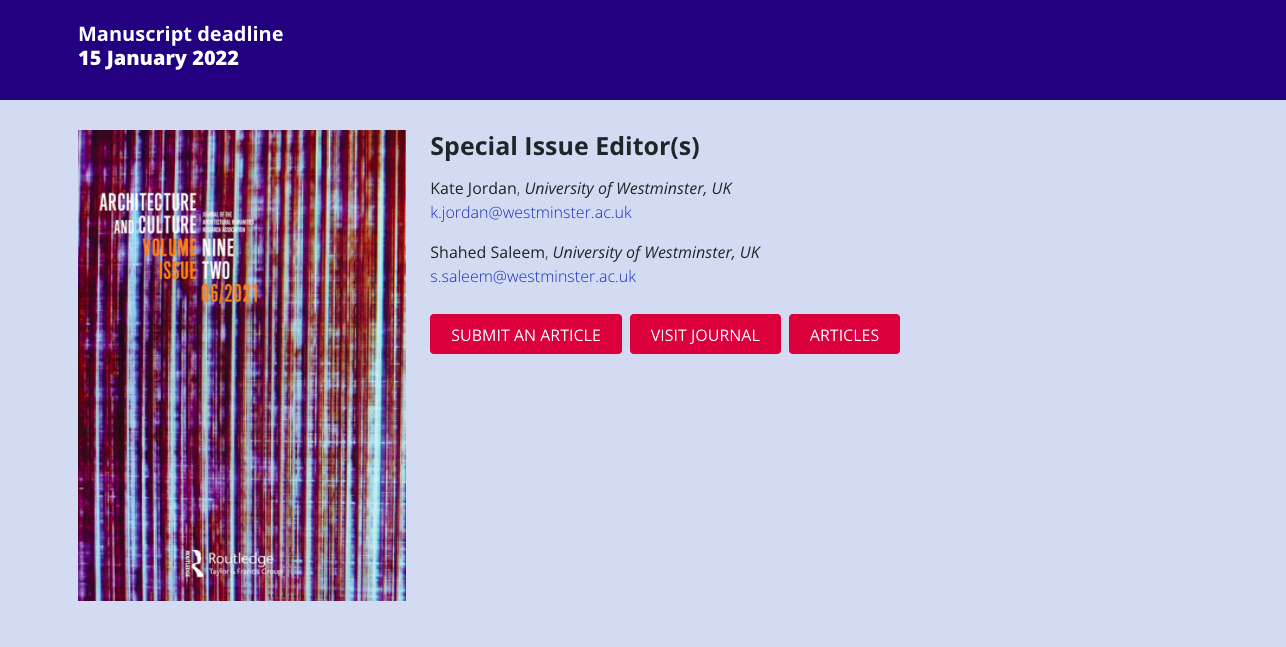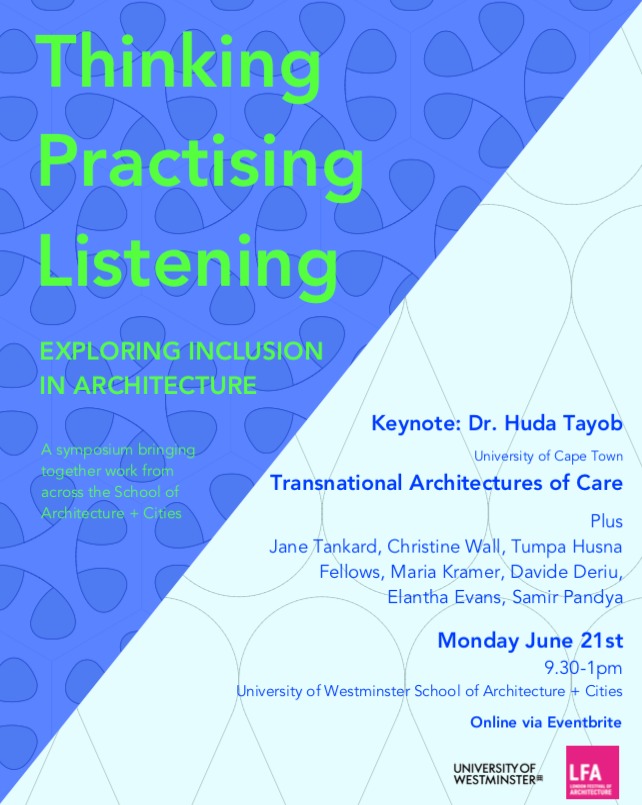Spiritual, sacred, secular. Places of faith in the twenty-first century
The special issue of Architecture and Culture (Volume 11 Issue 1) seeks to broaden notions of how the sacred, spiritual and secular are imagined and constituted through new architectures. We invite expansive interpretations of faith, religion and spirituality and the spatial and architectural encounters between them. We are interested in innovative faith practices and spaces, and welcome contributions that address the spatial implications of the rising phenomenon of online gathering and worship, necessitated by the Covid pandemic.
The journal invites articles which might explore (but not be limited to) the following themes:
- The significance of gender in worship, design and construction
- Style and iconography
- Shifts in demographics and populations
- Shifts in theology/narratives of the secular and post-secular
- Transnational links
- Modes of production – vernacular techniques and craft skills and mechanization
- Adaptive reuse and mixed use spaces
- Multi-faith spaces
- Community participation and engagement
- Heritage and identity
- Continuity and change/tradition and innovation
- Places of worship in post-conflict territories
- Funding, budgets, finance and stakeholders
- Virtual and material spaces
- Impacts of the pandemic on space and worship
- Secular ritual
The journal aims to publish a selection of articles from both established and early career scholars. It will also seek perspectives from practitioners (architects, artists and heritage professionals), stakeholders and members of faith communities.
For more information please go here: https://think.taylorandfrancis.com/special_issues/spiritual-sacred-secular-places-faith-twenty-first-century/
Kate Jordan is a Senior Lecturer in Architectural History and Theory at the University of Westminster. She publishes and lectures widely on modern-era Christian architecture: recent publications include her co-edited volume Modern Architecture for Religious Communities, 1850-1970: Building the Kingdom and ‘Places of Worship in a Changing Faith Landscape’ in 100 Years, 100 Churches. Her research on Victorian magdalen convents was shortlisted for the 2016 RIBA Presidents Award for Research. She is currently working on contemporary church architecture, a subject on which she regularly contributes articles and reviews for RIBAJ. In June 2019, she organised a conference entitled ‘Spiritual, Sacred, Secular: The Architecture of Faith in Modern Britain’, co-hosted by the University of Westminster and the RIBA.
Shahed Saleem is a Senior Lecturer at the University of Westminster, and a practising architect. His book, The British Mosque, an architectural and social history, was published by Historic England in 2018 and is the first comprehensive account of this building type in Britain. His architectural design work was nominated for the V&A Jameel Prize 2013 and the Aga Khan Award for Architecture 2016. His research won commendations at the RIBA President’s Medal for Research and Historic England Angel Award for excellence in heritage research, in 2018. He co-organised the conference ‘Spiritual, Secular, Sacred: The Architecture of Faith in Modern Britain’, June 2019, with Kate Jordan.












